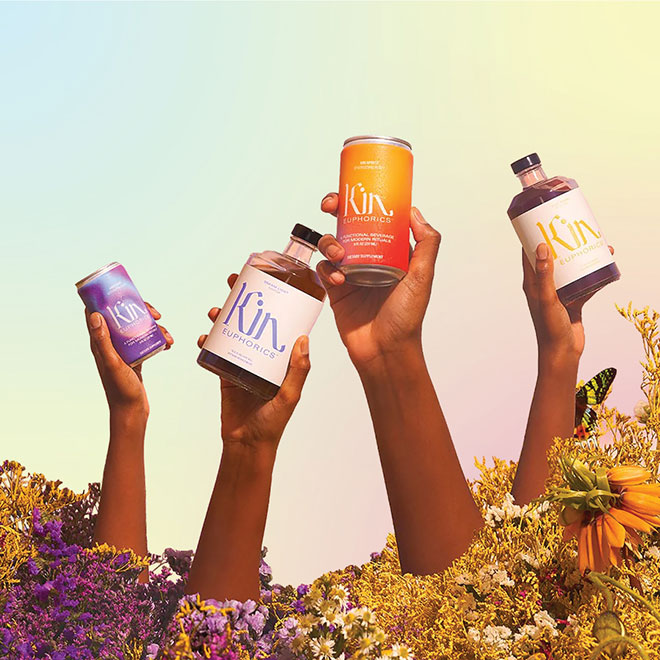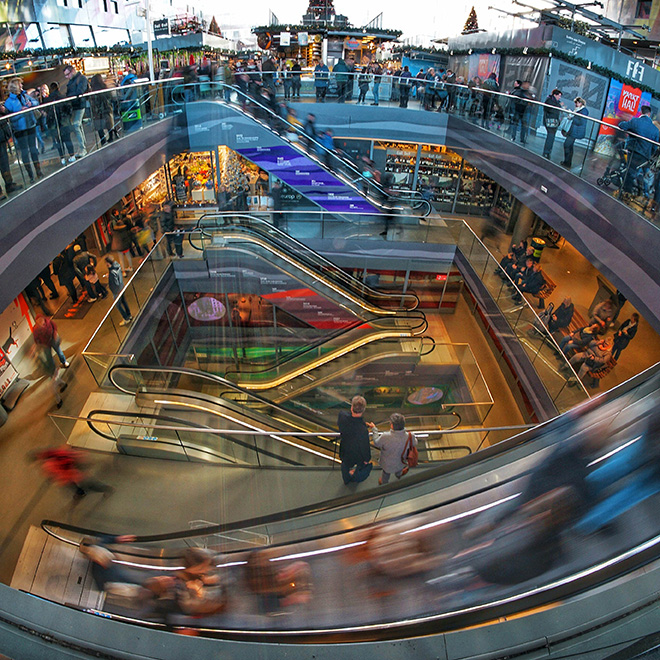
Bytes and Bites: Navigating the Digital Revolution in Restaurants
A Conversation at MUFES with Wawa and Panera
Estimated Read Time: 6 Minutes
In our line of business, things are in a constant state of change. New concepts are continuously coming to light (we’re looking at you, Netflix Houses and CosMc’s), and brands are tirelessly innovating to meet evolving demands. At the heart of this transformation lies the quest to craft extraordinary experiences, with a pivotal focus on understanding consumer desires. But what exactly do consumers seek from the store of the future?
At the Multiunit Foodservices Equipment Symposium (MUFES), we dove into the pressing question about exactly what consumers want to see in the future of restaurants and convenience stores. Taking the stage to explore this was Joanne Heyob, WD Partners’ SVP of Operations Strategy & Design. Leveraging insights from our own extensive consumer research involving over 2,000 participants, our aim was clear: to guide brands in redesigning their spaces, enhancing pickup processes, and future-proofing their establishments.
During our session, we dissected consumer expectations for the drive-thru of tomorrow and explored reinventions for traditional restaurant models. Learn more about what Joanne shared in our two POVs linked below!
- What Do Consumers Actually Want from the Drive-Thru of the Future?
- Dine-O-Mite: Time to Blow UP What You Know About Restaurants
Q&A With Joanne Heyob
In the second part of our session, Joanne led a panel discussion featuring industry leaders including Michelle Walsh, Wawa’s Director of Store Design, Formats & Lifecycle Programs, Scott Warrington, Panera’s Director of Engineering, and Rob Seely, WD’s Executive Director of Operations Strategy & Design who shared their invaluable insights into leveraging technology to enhance customer experiences, streamlining operations, and driving innovation.
Here’s a glimpse into the engaging Q&A session:
Joanne: Michelle, we know that online ordering continues to grow year after year. What is Wawa doing to adapt from a design perspective?

Michelle: Before the pandemic, we were doing a slow rollout. Then, all of a sudden, it became “do it everywhere all the time.” The number one issue we’re dealing with now is inconsistency; we have 1,100 stores and 1,100 different ways we execute digital order delivery. We also have the additional challenge of being one of the few convenience stores that also has a grocery element–you can get a pizza and a gallon of milk at Wawa. So now we are balancing a QSR online order process with a little bit of Instacart. There’s a lot going on in that space that we didn’t do well the first go around. Now, we have to rethink how we’re looking at this and bring the operating model into food service.
Joanne: It sounds like this has definitely impacted your overall layout and flow in the store. Can you share some of the things that you’ve learned?
Michelle: The number one thing that we learned is that takeout and online need to be integrated into the existing operation. What we see right now is an opportunity working with WD to consolidate and completely revolutionize our kitchen in order to create a central pickup point for online, delivery, drinks, and food service.

Scott: At Panera, we launched kiosks in 2016 and we had our own delivery drivers by 2018. During COVID-19, we felt that we were in a great position, and in a lot of cases, we were. Like Michelle was talking about, for us at Panera, integrating each channel together was extremely important both in the labor model side as well as the back of house equipment design side. Some of the things that we’re focused on is how those orders are slotted into the back of house systems.

Joanne: Scott, talk to me a little bit about what y ‘all have done to improve order accuracy. Are there any tips or tricks that Panera is doing to ensure that that order accuracy number continues to be high?
Scott: 97% of our digital orders are customized, so getting digital orders accurate is extremely important. We have a three-pronged approach. The first is we try to make sure that it’s done right the first time. We make the associate hold one button and bump it off their KDS screen with another when that order is modified. This gives them that one extra second of thinking, “Did I make that modification?”
The second step is that the consolidator does a visual check, and then they also verbally verify with the person who made it that they made that modification. The third and final check is when the actual QC or outside expo person visually inspects and then they sign their name to it. Those three steps, if followed, really help with the order accuracy.
Joanne: Rob, you’ve spent a lot of time on digital orders in the past. Talk to me about some of the challenges you face around food service design related to digital?
Rob: Digital orders can have an incredible impact on the speed of service. Depending on the velocity of those orders and how they’re input into the system, you can quickly max out the equipment and overutilize the labor for all types of orders. At WD, we like to take a step back, take the focus off of just the digital orders, and understand what peak transaction levels and volumes are, what equipment needs to be with the capacities of all orders, and then also take a look at the labor and make sure that we have the right amount of labor and it’s also deployed to be able to activate and work that equipment that we’ve put in place. So, between understanding what our capacities need to be for the equipment and what the labor is and how it needs to be deployed, that’s really where we start with our basis of design for a back of house.
Joanne: Is there anything you’ve seen from equipment innovation that can support digital orders coming down the pipe?
Rob: It’s no surprise that the popular conversation is automation. We all know that automation can help with consistency in product, ease of use for associates, increased throughput, and the reduction or redeployment of labor. But the key is understanding what is our main objective for that automation, and is automation going to solve whatever that key objective is? So many times, we all want to focus the automation on one particular task and process to say, “This is our most laborious task, so let’s throw automation at that, problem solved.” Oftentimes, we may make that process very efficient, but just push a bottleneck into some other equipment. If we look not only at automation, but also at what the ramifications are to the other equipment throughout the processes, we can tie that all together. We can make sure that it’s the right investment, and then make sure they’re all working seamlessly so we’re getting the biggest bang for our investment.

Navigating The Digital Revolution
In the dynamic realm of foodservice, the state of flux in consumer preferences and rise of technological evolutions requires constant evolution. At MUFES, we glimpsed into a future where technology and efficiency intertwine with experience.
As the industry charts its course through the digital revolution, it’s clear that collaboration, adaptability, and innovation will be key considerations. From reimagining store layouts to optimizing order accuracy, the insights shared by Joanne and industry leaders illuminate the path forward. To hear more from Joanne and delve deeper into the discussions at MUFES, check out her small clip by Foodservice Equipment Reports linked here.
As we bid adieu to MUFES until next year, let’s carry forward the spirit of exploration and the commitment to creating extraordinary experiences everywhere for consumers. Reach out if you think our expertise could be helpful and subscribe to Wayfind for future industry insights!

 Joanne Heyob
Joanne Heyob


